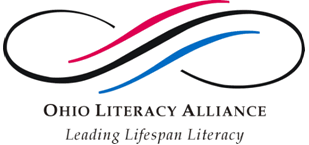
Keyword - Response to Reading
- Response to reading
- Students connect text to life, construct meaning, share ideas and understandings through writing and/or dialogue.
Alvermann, D.E., Young, J.P., Green, C., & Wisenbaker, J.M. (1999). Adolescents' perceptions and negotiations of literacy practices in after-school read and talk clubs. American Educational Research Journal, 36, 221-264.
Bean, T., & Rigoni, N. (2001). The impact of a multicultural young adult novel on intergenerational dialog discussion journals. Reading Research Quarterly, 36, 232-248.
Bean, T., & Rigoni, N. (2001). The impact of a multicultural young adult novel on intergenerational dialogue journal discussion. In J. Hoffman, D. Schallert, C. Fairbanks, J. Worthy, & B. Maloch (Eds.), Fiftieth yearbook of the National Reading Conference (pp. 127-137). Chicago: National Reading Conference.
Bean, T. W., Valerio, P. C., & Senior, H. M. (1999). Intertextuality and the e-mail discussion of a multicultural novel in secondary American literature. In T. Shanahan & F. Rodriguez-Brown (Eds.), Forty-eighth yearbook of the National Reading Conference (pp. 376-386). Chicago: National Reading Conference.
Boyd, F. B. (2002). Conditions, concessions, and the many tender mercies of learning through multicultural literature. Reading Research and Instruction, 42, 58-92.
Chandler, K. (2000). Rethinking the reading-writing workshop: Tensions and negotiations between a Stephen King reader and her teacher. Reading Research and Instruction, 39, 135-159.
Chinn, C., & Anderson, R. (1998). The structure of discussions that promote reasoning. Teachers College Record, 100, 315-368.
Hammond, J., & Macken-Horarik, M. (1999). Critical literacy: Challenges and questions for ESL classrooms. TESOL Quarterly, 33, 528-544.
Harmon, J.M., Keehn, S., & Kenney, M.S. (2004). Tutoring struggling readers: A program investigation. Reading Research and Instruction, 44, 46-74.
Hartman, D. K. (1995). Eight readers reading: The intertextual links of proficient readers reading multiple passages. Reading Research Quarterly, 30, 520-561.
Hicks, D. (2004). Back to Oz? Rethinking the literary in a critical study of reading. Research in the Teaching of English, 39, 63-84.
Ivey, G., & Broaddus, K. (2001). "Just plain reading": A survey of what makes students want to read in middle school classrooms. Reading Research Quarterly, 36, 350-377.
Paterson, P.O. (2000). The role of text in peer-led literature circles in the secondary classroom. In T. Shanahan & F.V. Rodriguez-Brown (Eds.), Forty-ninth yearbook of the National Reading Conference (pp. 235-251). Chicago: National Reading Conference.
Pomlun, M., Sunbye, N., & Kelley, J. (1999). Exploring gender differences to constructed-response reading items. Scientific Studies of Reading, 3, 55-68.
Rogers, T. (1991). Students as literacy critics: The interpretive experiences, beliefs, and processes of ninth-grade students. Journal of Reading Behavior, 23, 391-423.
Short, K. G. (1992). Researching intertextuality within collaborative classroom learning environments. Linguistics and Education, 4, 313-333.
Smagorinsky, P., & O'Donnell-Allen, C. (1998). Reading as mediated and mediating action: Composing meaning for literature through multimedia interpretive texts. Reading Research Quarterly, 33, 198-226.
Vyas, S. (2004). Exploring bicultural identities in Asian high school students through the analytic window of a literature club. Journal of Adolescent and Adult Literacy, 48, 12-23.
| Back to Keywords | HOME
|